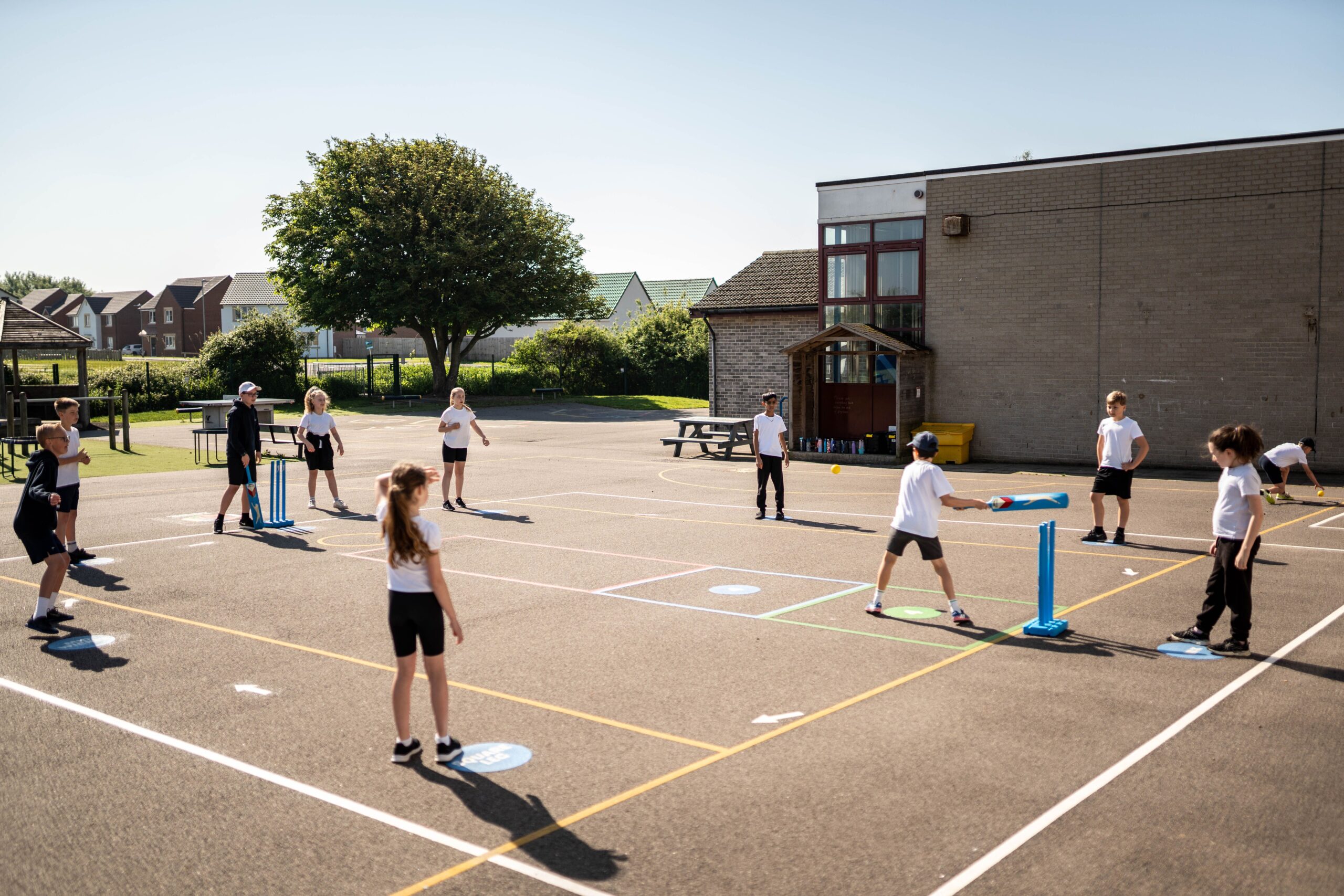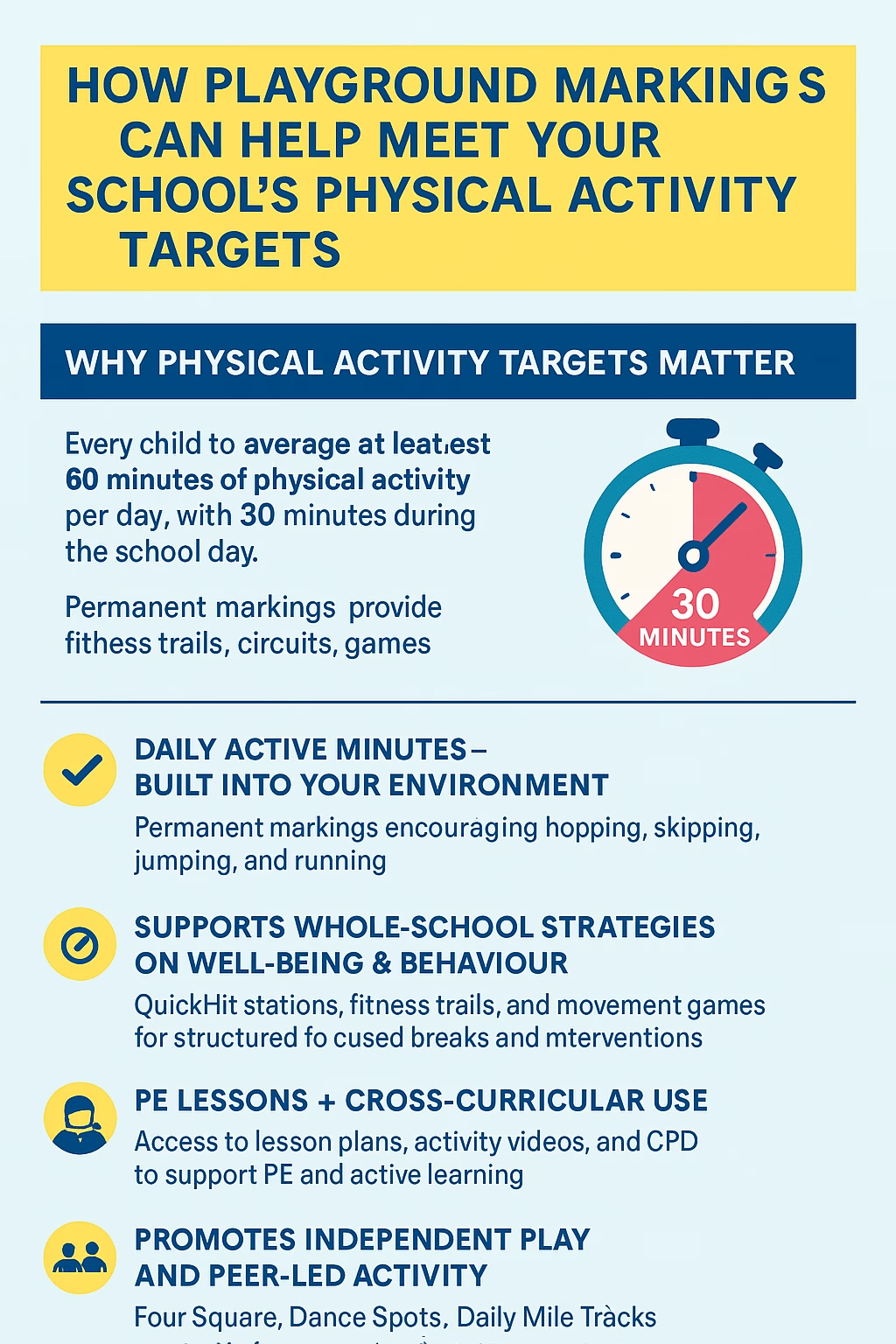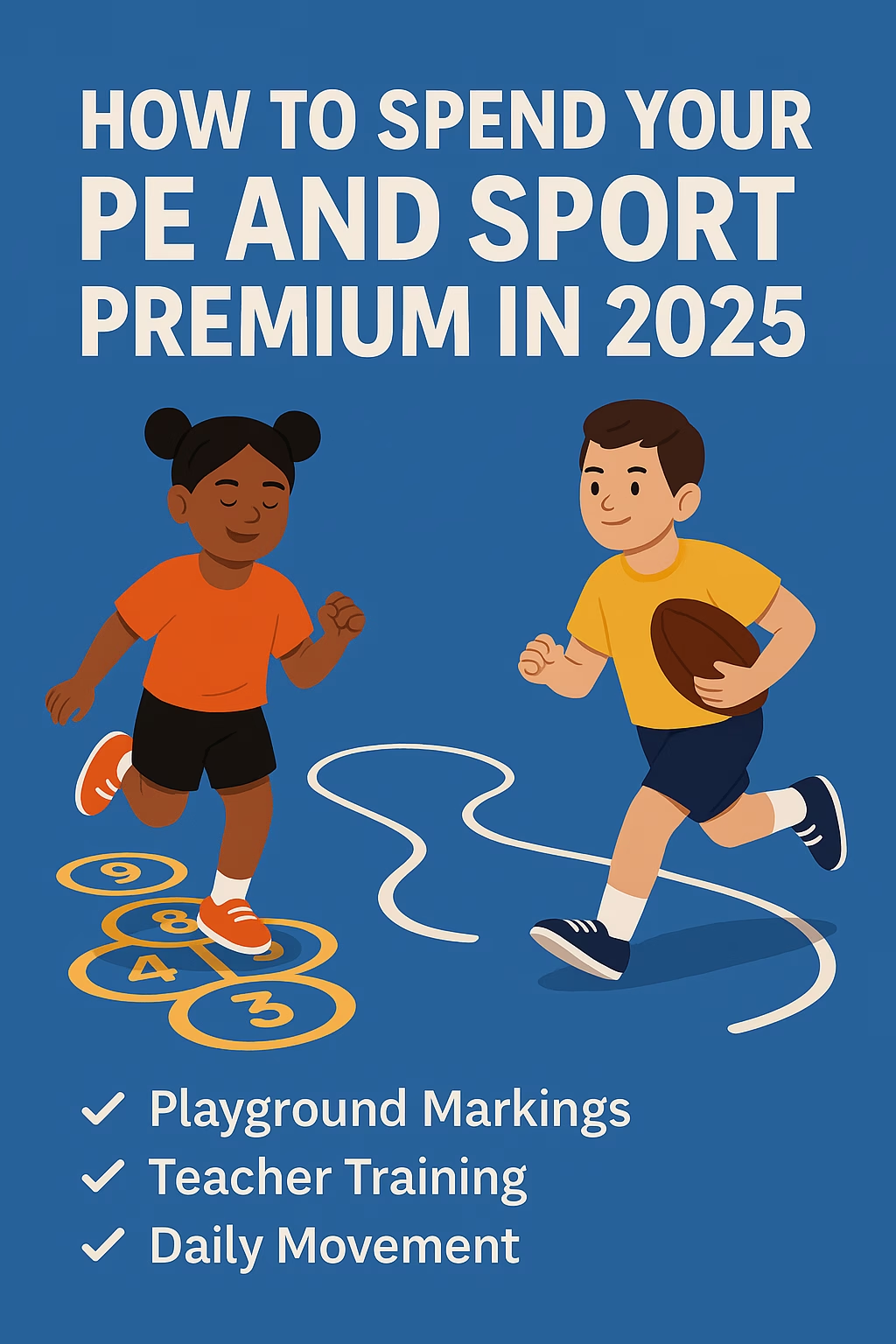Good playgrounds are indispensable for schools as they provide the right ambiance for children to play and socialise. Proper playground markings are critical to ensure safety and foster greater learning & enjoyment in students. Superior markings prevent accidents and offer innovative ways to integrate education into games.
Thermoplastic is now widely preferred over paint for playground markings. Thermoplastic playground markings are safe for students and cost-effective for schools. The material is highly durable and can easily withstand the enormous foot traffic in school playgrounds. It can last for over a decade with little maintenance to boot.
Let’s now delve deeper to understand more about thermoplastics and the advantages of thermoplastic for playground markings.
A] What Is Thermoplastic?
A thermoplastic is a type of plastic that gets soft when heated and hard or solidified on cooling. The material is pliable and easy to mold at high temperatures. The same material becomes hard as a metal when it’s cooled. This process can be repeated several times without affecting the molecular structure of thermoplastics. This special property makes the material highly versatile and easy to recycle.
The history of thermoplastics dates back to the early part of the 20th century when an American company called B. F. Goodrich discovered that adding plasticizers to PVC could make the material more malleable.
B] Types Of Thermoplastics
There are different types of thermoplastics with varied industrial applications. Read the following details to know what are thermoplastics used for:
- Acrylic: Acrylic plastic is a transparent material with high resistance. It can be used as a substitute for glass and common uses are LCD screens, lenses, paint, furniture, and medical devices
- Polythene or Polyethylene (PE): Polythene is a type of plastic that is primarily used for packaging. The other uses include toys, bags, bottles, buckets, houseware, and milk/juice containers
- Polyvinyl Chloride (PVC): PVC is one of the most commonly used polymers in the world. It has a wide range of industrial, technical, and everyday uses such as pipes, wires, roofing, and medical devices
- Polypropylene (PP): Polypropylene is a soft thermoplastic material used to make cups, jars, bottles, packaging, and plastic parts for machinery & equipment
- Polycarbonate (PC): Polycarbonate is a strong and transparent thermoplastic used in medical devices, eyewear, greenhouses, digital disks, and automotive components
- Polystyrene (PS): Polystyrene is a synthetic polymer used in food packaging, storage containers, trays, CD/DVD cases, and toys
- Polytetrafluoroethylene (PTFE, Teflon): PTFE is commonly used to provide non-stick coating for pots & pans, gaskets, electrical equipment, and vessel linings
- Styrofoam: Styrofoam is a type of expanded polystyrene foam. It finds application in the manufacture of food containers, disposable plates & trays, and in providing thermal insulation
- Polyamide: Polyamide is popularly known as Nylon. It is used in textiles, tents, carpets, car tires, and utensils.
C] Benefits Of Thermoplastic For Playground Markings
The major advantages of thermoplastics for playground markings have been described below:
1. Environment Friendly
Playground markings that use paint are heavily laden with chemicals. This gets absorbed into the ground over time. However, thermoplastic playground markings are eco-friendly. The material does not leach and harm the environment.
Further, thermoplastic can be reheated and reshaped several times without any loss to its chemical properties. This recyclable feature reduces the use of plastic and generates less waste. The manufacture and transportation of thermoplastics entail lower energy consumption as compared to other materials.
The use of thermoplastic containers can also minimise the use of single-use plastic which is detrimental to our environment.
2. Durability
Children love playing and school playgrounds typically witness intense physical activities. This only makes it more imperative to make the markings durable. Unlike paint, thermoplastic markings can withstand the vagaries of weather around the year and remain intact for a long time. Their tough protective surface keeps the markings fresh and vibrant for well over ten years.
3. Low Long Term Cost
Playground markings using paint often appear to be cheap as compared to thermoplastic markings. However, the fact that paint fades much faster only means that you end up spending more over time. You may probably need to repaint the markings every year and incur recurring expenses.
High-quality thermoplastic markings have an average lifespan of a decade and can even last beyond. It is not an expense but an investment that provides cost benefits over several years. It is also easy to maintain thermoplastic markings with a thorough cleaning required only once a year to retain them in proper shape.
4. Safe And Non-Toxic
The pandemic wreaked havoc on our normal lives with children suffering more due to isolation and indolence. Now parents and teachers have been encouraging their wards to spend more time outdoors in order to encourage physical activities in kids after COVID. It is essential that the outdoor environment is safe and conducive for longer playtime.
Unlike paint, thermoplastic playground markings are completely non-toxic and absolutely safe for children. They also include certain non-slip features to prevent their slips and falls. Kids can play with full zeal and minimal risk of injuries. The markings can be applied very fast with the least disruptions to the playground. They also remain clear and bright over several years.
D] What Type Of Playground Marking Can Be Made Using Thermoplastic
Thermoplastic markings can be applied to different surfaces in playgrounds and other recreation zones. Some common types of these markings are listed below specific:
1. Hopscotch And Maths Markings

Playground activities for primary schools help to enrich your kids’ lives in more ways than you can imagine. Hopscotch is an all-time classic that requires players to hop on numbered squares in a certain pattern. A range of thermoplastic hopscotch can be designed to boost students’ physical fitness, coordination, and numerical skills. Playgrounds can also incorporate maths markings such as geometric shapes, number lines, and number grids.
2. Mazes And Puzzles
It’s no secret that solving mazes and puzzles helps to sharpen a child’s problem-solving abilities and spatial awareness. They challenge the players to find the most efficient route to reach their destination. The thermoplastic maze markings provide a fantastic avenue for kids to play together, appreciate teamwork, and develop their individual skills.
3. Educational Games

If students are bored with the traditional classroom learning, you can take them outdoors to teach in a fun & engaging way. Thermoplastic markings can be used for various educational games such as world maps, number counting, space science, and word-building. This makes learning creative, interactive, and enjoyable for children of all ages.
4. Physical Activity Games

Playing soccer, tennis, or basketball will no longer be the same. A vast collection of thermoplastic sports markings can make the plain courts more colourful. Several mini-courts can be designed for regular and casual play. Further, you can create attractive fitness trails with simple exercise stations to promote physical education in primary schools.
Conclusion
School playgrounds provide a wide range of opportunities for students to engage in physical activities. High-quality thermoplastic markings can be used to transform dull playgrounds into vibrant learning spaces. While they provide a safe and creative environment for students, they are also durable and cost-effective for educational institutions.
Thermoplastic markings can be a great choice for you to revamp a bland play zone. Contact Us now to find out how!



